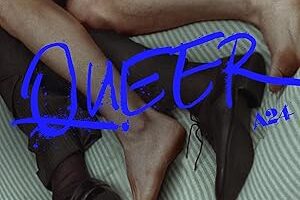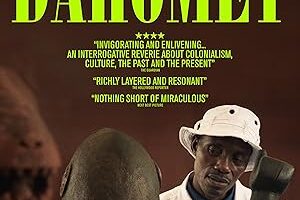Tropic Sprockets / Joker: Folie à Deux
By Ian Brockway
In 2019, director Todd Phillips broke ground with “Joker”. Though the character has been frequently performed, Phillips’s version worked because it was saturnine, gritty, and intensely psychological. Furthermore, the film was impactful for being an organic portrait of someone completely low, lost, dismissed with disgust, and cast aside. One could ignore the Batman comics if one chose. This was a bent and disturbed person with no added ink or color necessary. Portrayed by Joaquin Phoenix, Joker illuminated the poetry of the disenfranchised.
Now in 2024 we have Joker: Folie à Deux.” [Showtimes and trailer at Tropiccinema.com. ] Once again, Phoenix stars in the title role and he is masterful and perfect, perhaps too much so. He is shockingly emaciated. His shoulder blades poke through his skin like horns of a rhinoceros. Phoenix as Joker is Kafka’s Hunger Artist, and he is completely consumed within this incarnation.
As he marches through his cell, he has eyes of lead. Phoenix is the reflection of Antonin Artaud at Rodez, totally and completely within himself, lone-spun and lugubrious.
As Fleck goes from hall to hall, he catches the eye of a sly eyed young woman with limp blonde hair Lee (Lady Gaga). After noticing his interest, a guard arranges to let Fleck attend Lee’s music class.
Fleck is shy but compelled. Lee’s eyes are big and piercing. She set her father’s house on fire. Fleck shot a talk show host on live television.
Two kindred spirits.
Suddenly Lee breaks into song and Lady Gaga’s voice is beautiful but Phoenix’s voice is more intriguing, splintered, wispy and uneven.
Lee and Fleck spend more time together and the musical interludes are noted as dream sequences. Fleck is often bereft in his cell, alone and untouchable. Gaga’s Lee is alluring but there is not much for her character to emote or engage in, Lee merely looks lovingly at Joker and then drifts into song. She dances, sways, and holds hands.
There is little else here.
After the song and dance, Arthur Fleck takes center stage at the courthouse and it comes to light that like another homicidal anti-hero Norman Bates from “Psycho”, Fleck has mother issues. Again, Phoenix executes his part scarily well. Showing both pain and psychosis.
The only difference Is that the visceral existential impact is weakened in favor of a lighter tone with the inclusion of musical numbers. Lee often sees her Romeo-Joker from afar, from a mirror or across the hall. The most compelling scene between them is an intimate sharing scene portraying Gaga as a smoke-inhaling vampire. Otherwise, the two are adrift islands of anti-sociality.
Despite its missteps, the sequel is watchable for its determination in presenting Joaquin Phoenix as a completely encapsulated and dangerous character. The actor does not lose focus on the being named Arthur for one moment. One only wonders why Phillips had Joker sing along in the musical segments when his strange and saddening laughter combined with his attraction to another is sufficient.
Write Ian at [email protected]
[livemarket market_name="KONK Life LiveMarket" limit=3 category=“” show_signup=0 show_more=0]





No Comment